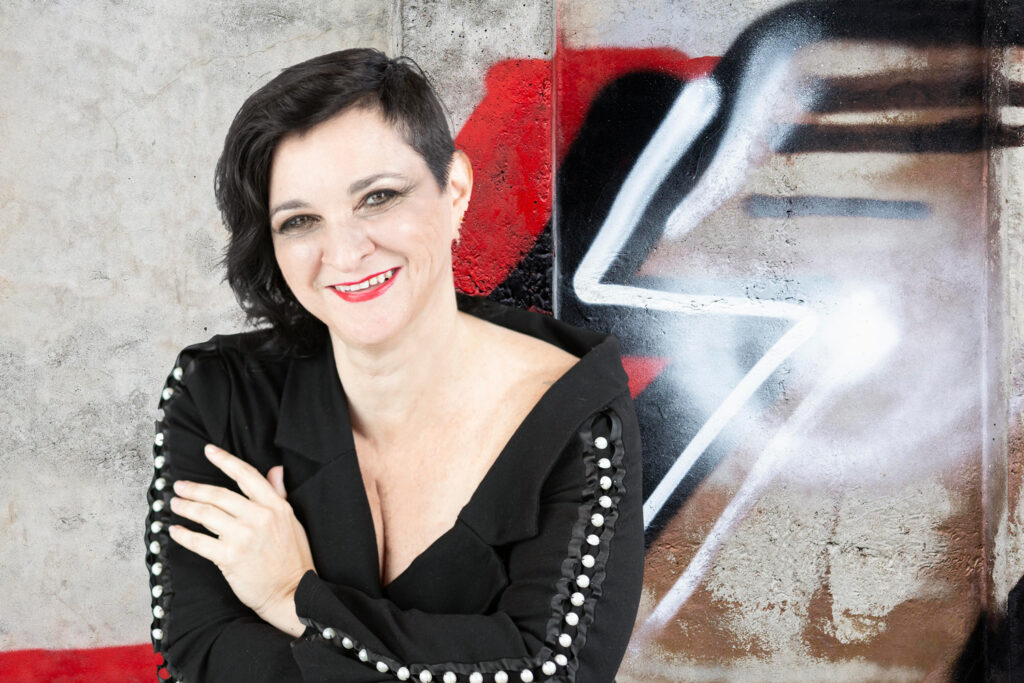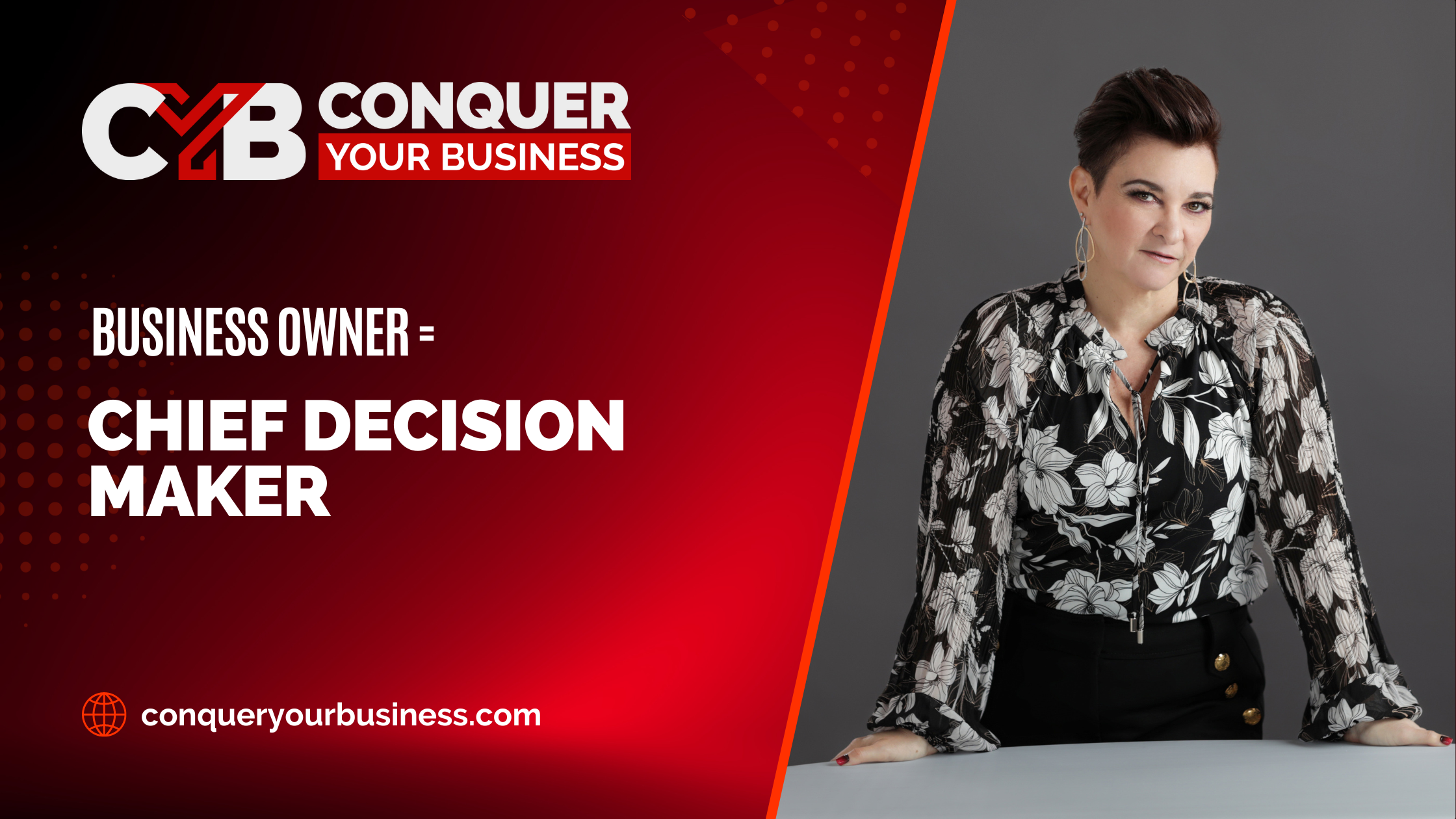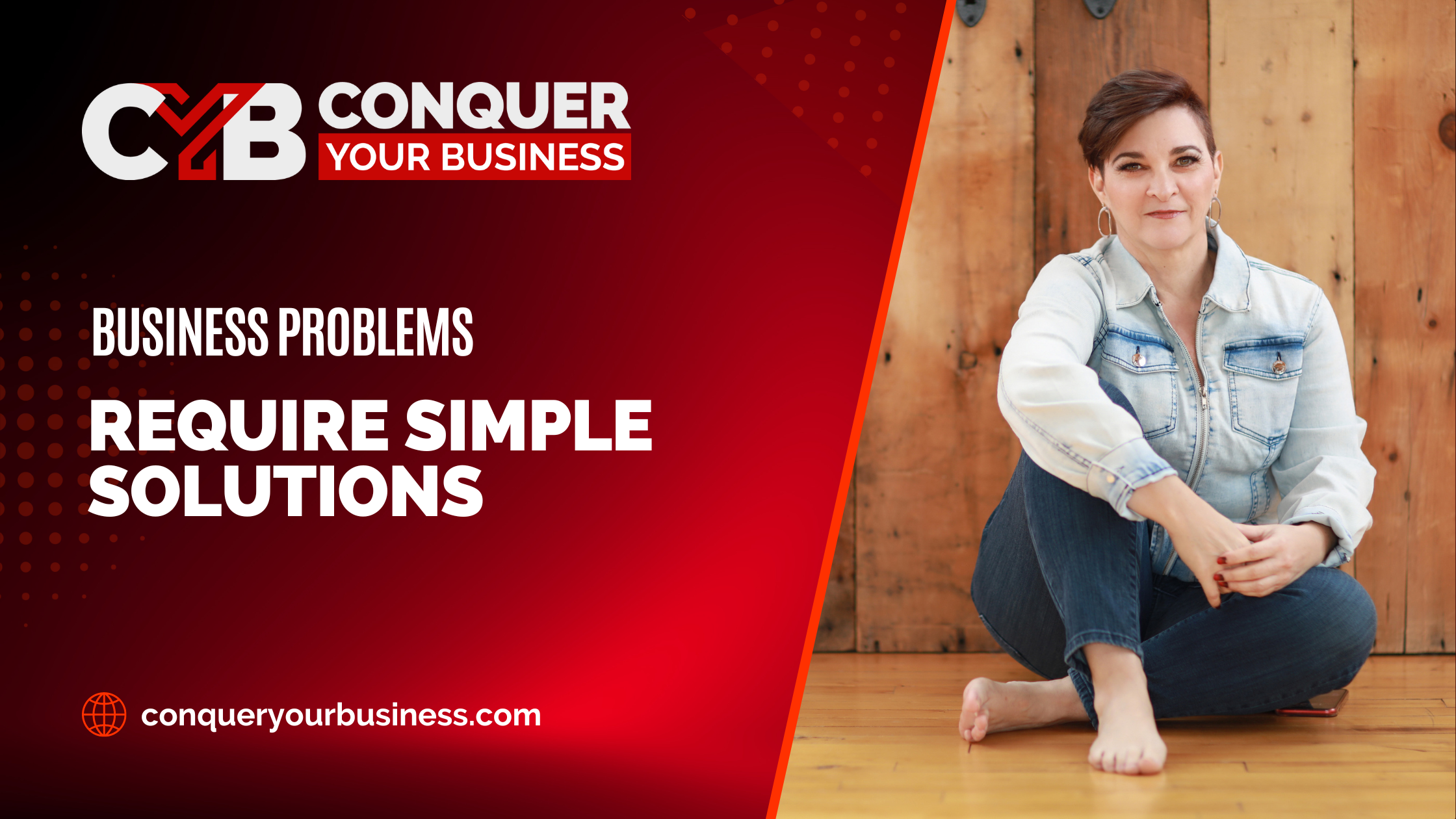Being intentional about what you do and say is important to create the brand that you want. Creating a brand intentionally makes it easy for your ideal client to quickly identify whether or not you are their person, whether they are your person. When you create your brand on purpose, it lets them move forward in their client journey.
Consistency is another thing that actually creates an in-demand brand. I am not talking about consistency in terms of what you do regularly, like consistently posting on social media. In this context I am talking about ensuring that all of the pieces of your brand are consistent so that the feeling you want to create with your brand is exhibited no matter how somebody is interacting with you.
A Confused Mind Always Says No
My current “brand” is known for being pretty bold. I tend to be direct and have a bit of a potty mouth. But when I launched my first business that required my first logo, it was a blue and gray square with a paisley design in it.
Seriously.

This is not an image that has any consistency with me as a human. I didn’t even wear paisley when it was all the rage back in the Pretty in Pink 80s when I was in high school and college. But I had been in corporate America, and the first business that I owned was a franchise.
Coming out of financial services, everything was blue and gray and forest green. There were a very limited number of colors, visuals, and language that I had been taught was “appropriate” for a business owner and their logo. And while I use a logo as an example, remember that your brand is much more than that.

From the first time you meet me, it is pretty easy to figure out that PAISLEY is not something that’s associated with me. I created this logo because of the stories I told myself and what I thought was appropriate. But in reality , that visual was inconsistent with me and with my brand. And if something feels off to your audience, if something feels that it is not in alignment across the different pieces of your brand, people will back away from you.
When I teach about having sales conversations, I teach that a confused mind always says no. However, this actually applies to your marketing as well. If something feels “off” to a prospect – even if they can’t put their finger on it – they’re going to back away slowly rather than buy from you. They might give you smiles and likes, but if there is something off and you do not have consistency of brand, they’re probably not going to buy from you. And in our very crowded marketplace, consistency is more important than ever.
What Goes Into Creating a Consistent, In-Demand Brand
So what goes into creating a consistent, in-demand brand? What has to be in alignment to make this happen for you?
First, remember that your branding starts with how you want to make people feel. To really take a deep dive into that question, you can listen to last week’s Erin Marcus Live or read our most recent article, Be Careful About Branding Your Business by Default.
Once you identify how you want people to feel when they interact with any of the pieces of your marketing – including with you yourself – you can explore the list of other things that go into creating an in-demand brand, how they fit together, and what happens when they do not.
What or Who Exactly is The Product
I see this a lot with financial advisors and realtors but it happens in other places too. People buy from people they know, like and trust, but too often people in these industries talk about the brands they represent – not how they fit into the brand.
For example, if you are a real estate agent working for Keller Williams – which is a fantastic brand – the truth is, people are hiring you to be their agent because of you, not Keller Williams. They might like the fact that you are backed up by a quality organization, but they are buying from you. If you are out in the world networking and marketing, and all you are talking about is the company behind you, your client is not going to get to know, like, or trust you as the person who is actually offering the service.
The other misalignment, or lack of consistency, that I see is when people mislabel or “overlabel” what they do. I see this more in direct marketing offers. Maybe your line of products has one single supplement, but you call it a health and wellness company/system. Is it a lie? Not necessarily, but it is confusing, and people interpret it as misleading. Instead, claim what you are offering with all of the confidence in the world, but don’t mislabel it. When you mislabel it, you create confusion, and by creating confusion, you create distrust.
I see a lack of misalignment or inconsistency in branding happen most frequently when entrepreneurs and service providers business owners are not 100% confident about their competence. You might still be battling a little bit of imposter syndrome, which I get.
Brand consistency is about stepping into your knowledge, stepping into your confidence, stepping into what you know you know how to do. By putting that front and center with what it is that you’re offering, along with what exactly the product is and what exactly you are selling, you can be in alignment across all of the pieces of your brand.
How You Deliver Your Products or Services
The way you deliver your product or your solutions is actually part of your brand. The way you package and present your solutions determines whether you are interpreted as a vendor or a thought leader. For example, are you a one-on-one consultant? Do you offer group programs? Do you offer online coursework only? Are you a solopreneur? Do you have a team that provides services to clients? The way that you offer your products and services is part of your brand.
Using my own business as an example, I have a wide variety of products and services. Part of my brand is all about meeting entrepreneurs where they are in their business journey to help them break through whatever is stopping them. Since that is very much part of my brand, I make sure I have several options to meet people where they are. What I say I focus on and what I actually offer are the same thing.
Language and Word Choice
This is where it falls apart for so many people. Language and word choice are very, very much part of your brand. Looking at my business as an example, I’m very direct. I’m tactical in nature. I want people to have breakthroughs. I am all about what I have to do in the moment to get what I want to achieve. That’s my brand. It would be inconsistent and not make sense if I were to speak in a lot of fluffy, airy, light language. It’s not consistent with my brand.
If you want to create an in demand brand, you need to use language that is in alignment with your approach to your service, which is in alignment to your visuals. For example, it wouldn’t make sense for me to show up large and in charge, a little bit crazy, with a red and black tiger logo, and then be very hesitant in my language. It wouldn’t make sense.
Language can be fluffy or dreamy or direct or nurturing. Is your word choice in alignment with how you want to make people feel and the outcome you provide? Think of this as a way to give people a peek into the way you work without having to go into detail about your processes.The words that you use are a part of your brand, as well as how you put sentences together.
Your Communication Style
Let’s use Denise Duffield Thomas as an example, because I read some of her content again the other day. She’s from either Australia or New Zealand, and she talks about money manifestation. One of her books is called Chill and Prosper. Her brand is very in alignment. She often doesn’t have shoes on, she presents herself very light and breezy. A lot of her visuals are on the beach. Her communication style is very approachable with a lot of storytelling. It’s all in alignment.
Is your communication style in alignment with how you want to make people feel? Your communication style gives people a peek into what it would actually be like working with you. It helps your target audience know if they would enjoy working with you.
Here’s another example from my own business. I’m a bit sweary. I’ve had one client who knew they wanted to work with me say, “Erin, I love you. You’re awesome. Can you tone down the swearing?” To which I responded, “I can try but I can’t promise.”
I’m very much about personal responsibility. It’s in my brand. It’s everywhere. No blaming anyone. People who aren’t comfortable, or aren’t ready yet are turned off by that. They’re not ready to step up into that, and my brand turns them off. My brand is a little overpowering for them. That’s fine. They’re not ready. They know where I am. When they’re ready, they’ll come.
Your Brand Visuals
Your visuals are part of your brand. Your logo, and your colors and the visuals you create are part of your brand. Your website, how all of your visuals come together, and the ease of navigating your site, are also part of your brand.
If you look at our Facebook group, and if you look at the posts on all of our platforms, they’re usually bright colors. They’re not pastels (or paisley), so it’s all in alignment. It’s very celebratory in nature. I don’t do things if they’re not fun. I have bad days like everybody else but I don’t want to do the “bang your head against the wall” version of doing business. And that’s what I don’t want for other people, either. It’s part of my brand. So our brand is very celebratory and direct with very bright colors. And you see that in our visuals as much as in the language that we use.
Your Pricing
Pricing is brand positioning. Your pricing should be in alignment with your promise. Here is an example of what this means. I get paid to go on stage and speak for people. If I were to submit a proposal for a paid speaking gig for $5000 and everyone else who was being considered submitted a proposal for $10,000, the event manager would not say, “Oh, Erin is such a great deal, let’s hire her!” They would look at my proposal and think, “Well, Erin must not be as good as everyone charging $10,000.”
Your pricing is part of your brand. your pricing is your positioning. Your pricing is your declaration to your market of what you feel is your value. It all has to be consistent. If I was to show up as a badass, making huge promises of helping to make multiple six and seven figure businesses, telling you my own stories of making multiple six figures, and how fast we made that happen, and then tell you that it’s $1,000 to work with me as a private client, you would think I’m crazy.
It’s not in alignment. It’s inconsistent. So your pricing is just as much part of your brand positioning as all of the other pieces. If these things are not in consistent alignment with each other, people are going to interpret it as something is not quite right. They are going to wonder why you are talking a big game but charging entry level prices.
Leveling Up Your Brand on a Budget
Trying to increase your prices when your website and logo still look DIY can be a challenge. You want to charge more, but then you have to come up with the investment for a new website, But you can’t redo your website until you have the money by charging more.
There is a balancing act between the money you are making to invest in your business and needing to make more money in order to invest in your business. You are better off investing in the things that will make a difference and going all in on them than you are trying to fix everything at once.
The good news is that you don’t have to do everything at once and you don’t have to make giant leaps at once. But you do have to be intentional about it. Do an inventory of what you have, and what you can afford to invest in a professional doing for you to help uplevel as you’re trying to uplevel your business and your pricing. There’s a balancing act there. The good news is you don’t have to change everything at once, just wiggle or stair-step your way up.
Success is very, very seldom one giant leap. It’s a matter of steps and tweaks and steps and tweaks. So take the list that I gave you today, apply it to our litmus test, which is how does my brand make people feel and adjust as needed.
- What or who exactly is the product
- How do you deliver your products/services?
- How does your language and word choice fit with your brand?
- What is your communication style?
- What do your brand visuals convey?
- Does your pricing position your brand correctly?
An off-kilter brand often happens because newer entrepreneurs are iterating as you grow, which is the exact right thing to be doing. However, if you don’t go back and do some work to make sure all these things are in alignment you’re making your job of attracting clients even harder than it has to be.




